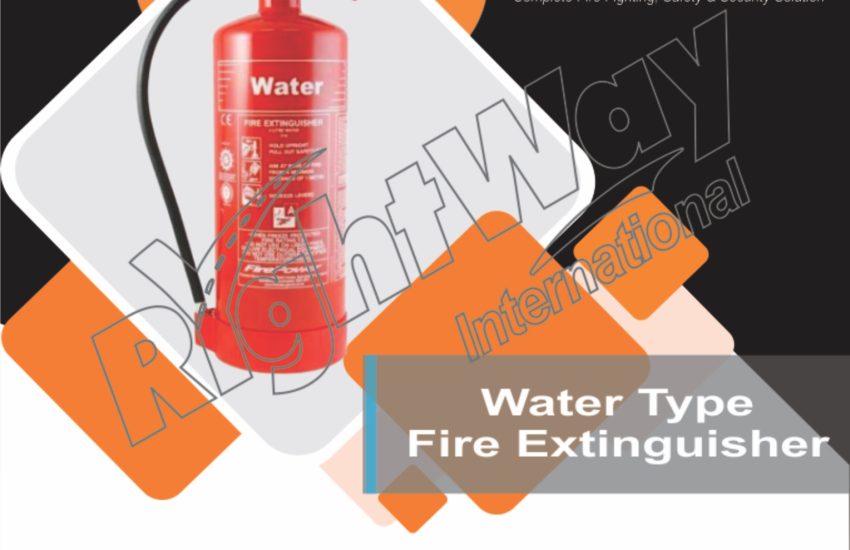Types of Water-Type Fire Extinguishers are among the simplest and most widely used fire safety tools. They effectively combat Class A fires, which involve ordinary combustible materials. This article outlines their types, advantages, uses, and maintenance to help you understand their essential role in fire prevention.
What Is a Water-Type Fire Extinguisher?
A water-type fire extinguisher uses water as the primary extinguishing agent. When discharged, the water cools the burning material and reduces the temperature below its ignition point. As a result, it halts the combustion process. These extinguishers are especially effective against Class A fires, which involve paper, wood, cloth, and similar materials.
Types of Water-Type Fire Extinguishers
1. Stored-Pressure Water Extinguishers
These units store water under pressure and release it through a hose or nozzle when activated. They are commonly found in homes, offices, schools, and warehouses, where the risk of Class A fires is higher.
2. Water Mist Extinguishers
Instead of releasing a direct stream, these extinguishers emit a fine mist. This mist cools the fire while minimizing water damage. Therefore, they are suitable for environments like labs, hospitals, and data centers, where sensitive equipment is present.
Benefits of Water-Type Fire Extinguishers
1. Highly Effective for Class A Fires
These extinguishers provide a fast and efficient way to extinguish fires involving wood, paper, textiles, and other common materials.
2. Affordable and Accessible
Water extinguishers are generally less expensive than chemical-based models. Consequently, they are a popular choice for both residential and commercial use.
3. Easy to Operate
They feature a simple design: pull the pin, aim the nozzle at the base of the fire, and squeeze the handle. Most users can learn to operate them with minimal training.
4. Environmentally Friendly
Since they use plain water without chemical additives, these extinguishers have a low environmental impact.
Applications of Water-Type Fire Extinguishers
1. Residential Settings
Homeowners use water-type extinguishers to handle kitchen fires or fires caused by paper, cloth, and wooden materials.
2. Commercial Buildings
Offices, schools, and public buildings often rely on these extinguishers to deal with basic fire risks. Their simplicity and reliability make them a common choice.
3. Industrial Facilities
Industries that process paper, textiles, or wood often install water extinguishers. However, users should avoid placing them near electrical equipment or flammable liquids, as water may worsen those fires.
Maintenance Tips for Water-Type Fire Extinguishers
1. Conduct Monthly Inspections
Check each unit for visible damage, pressure gauge status, and general cleanliness. Make sure the nozzle is unobstructed and that the pressure is within the acceptable range.
2. Arrange Annual Servicing
Hire a licensed professional to perform an in-depth inspection once a year. They will test the discharge mechanism, check water levels, and verify the extinguisher meets regulatory standards.
3. Recharge or Replace After Use
After discharging the extinguisher—even partially—you must recharge it. If it’s damaged or too old, replace it. Always follow the manufacturer’s instructions and dispose of used units responsibly.
Conclusion
Types of Water-Type Fire Extinguishers offer dependable and cost-effective protection for Class A fires. By understanding their features, applications, and maintenance requirements, you can use them more effectively and safely. Regular inspections and timely servicing ensure these extinguishers remain ready for action, helping you create a safer environment at home, at work, or in industrial settings.


